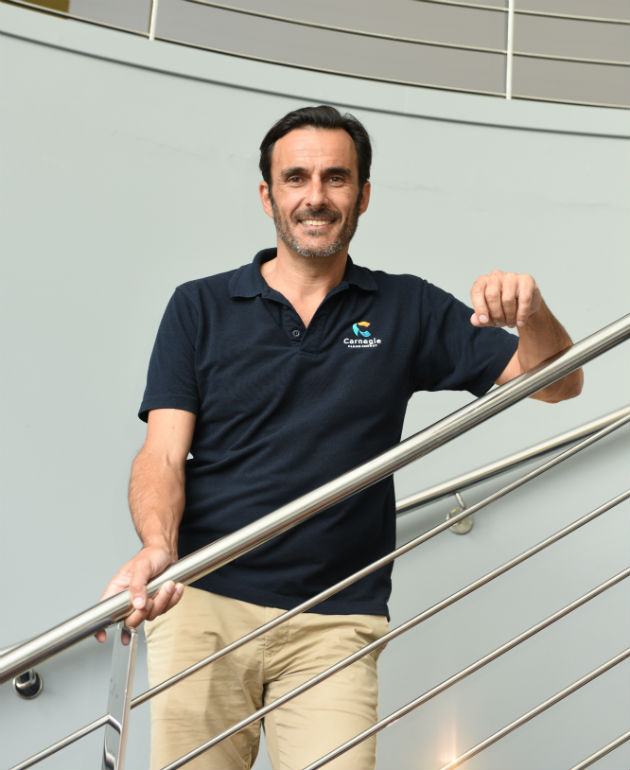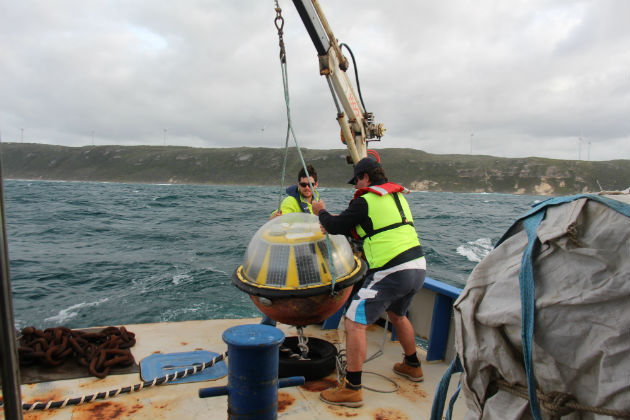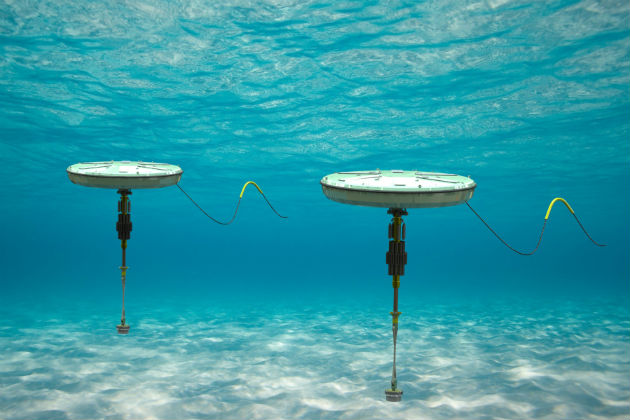5 December, 2017 By: Kasey Clark
With the longest coastline in Australia, it’s no surprise that WA company Carnegie Clean Energy is leading the way in harnessing the power of waves and turning them into renewable energy.
With project sites in WA at Fremantle, Garden Island and soon Albany, Carnegie currently sells enough power back into the WA grid to provide a constant supply for approximately 200 homes.
The ups and downs of wave
Since the first trial wave park opened in Portugal back in 2008, the race has been on to find a way to harness the power of waves.
“Wave energy is really the last untapped, large-scale renewable-energy resource,” says Ottaviano.
“It’s globally distributed and abundant. There’s enough energy in the oceans’ waves to power the world multiple times over.”

Wave technology also doesn’t compete for space on land. “Solar farms are great, but they do take up space,” says Ottaviano.
“Wind is better from a space point of view, but it has a visual impact. With our technology, it’s fully submerged, so it’s invisible and it’s offshore.”
There are obvious challenges for wave power – the environment is wet, it’s corrosive, and it’s offshore, so it’s remote and difficult to reach.
Ottaviano says that while wave energy is consistent and predictable, very infrequently, it’s generated in an extreme environment with massive waves and weather.
“For one per cent of the time, it [the technology] has to be robust enough to survive an exponential increase in energy.”
Given the challenges, wave technology has seen many different technological approaches trialled and tested, from floating to riding the waves or using wave surges to generate power.
When Carnegie started testing its technology ten years ago, which deploys buoys that sit under the water, it was one of up to 40 companies developing prototypes.
Many of those 40 companies did not make it, with technologies failing to perform and investors shy about taking the leap to fund commercialisation.
Enjoying this article?
Sign up to our monthly enews
Such teething problems are not unique to wave, says Ottaviano.
“All new power technologies have typically been developed over decades and typically by governments, using billions of dollars.”
Carnegie’s success where others have failed is due both to developing technology that works and the local support the company has enjoyed.
“We’re the biggest employer in the renewable-energy sector in WA and we’ve got thousands of WA shareholders.
"This is a great Western Australian story,” he says.
What’s next? The Albany project
After a decade of research, prototypes, trials, technology, funding rounds and sharemarket listings, the expectation is that over the next decade wave energy will begin to deliver on its promise.
As the technology is manufactured and deployed on scale, the price of wave energy is expected to become more competitive and therefore accessible.
Carnegie’s next deployment will be in Albany to help the Shire of Albany with its vision of becoming completely self-sufficient in power production.

The new project will be furthered boosted by Carnegie’s partnership with the new national Wave Energy Research Centre, also being built in Albany, which will put WA front and centre for research into wave, tidal and offshore wind energy.
“That Albany project will initially involve the deployment of one of our CETO 6 units, which is our next-generation commercial prototype,” says Ottaviano.
“That’s really significant for us, because it’s the first product that will then go into commercial use and mark the transition from our being an R&D company to being a commercial company.”

The impact on WA shores – and citizens
So, what’s the upshot for Western Australians? Ultimately, says Ottaviano, a significant proportion of WA’s energy could come from the ocean’s waves in our own backyard.
“Realistically, I think we should be aiming for something like 10 or 20 per cent of WA’s energy coming from its ocean in the next couple of decades," he says.
“It’s also an opportunity for Australia to actually own the intellectual property around wave technology. That’s unusual. Mostly, Australians are very good at inventing things and very bad at commercialising them.
“This could be a chance to hang on to the IP and exploit that internationally.”
